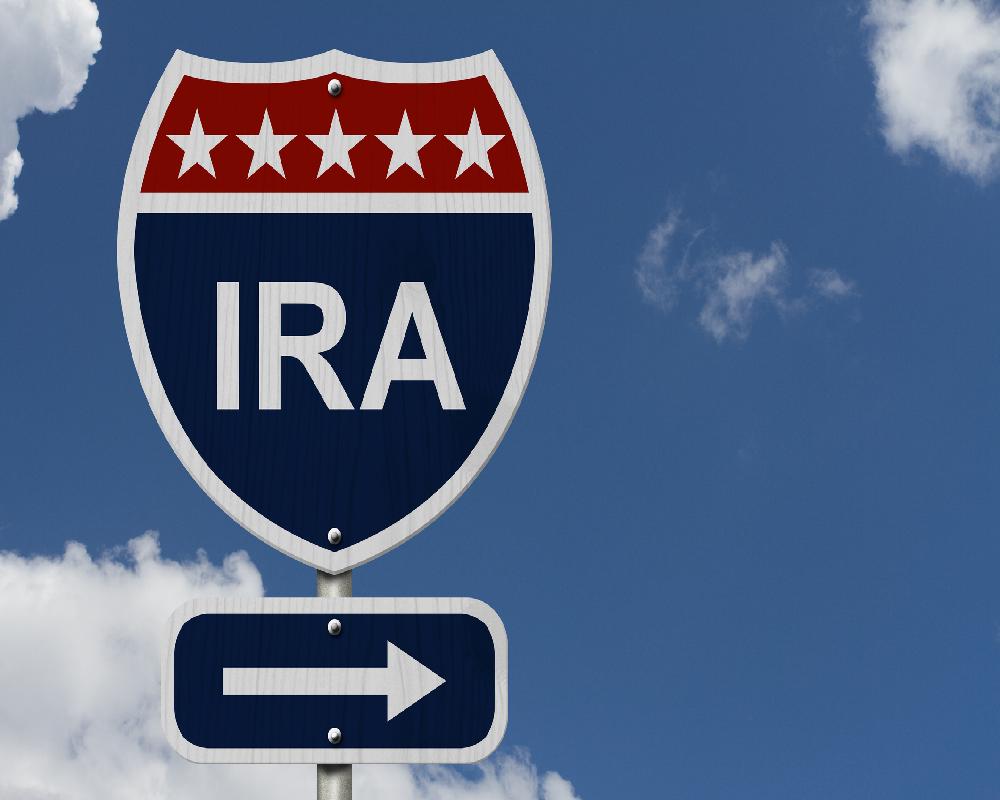Blog 
Click here to go back
Check our blog for updates on regulations or resources that can be used to help you and your business achieve your financial goals.
Tax Refund Tracking Resources
 Are you expecting a tax refund and would like to be able to track it?
Are you expecting a tax refund and would like to be able to track it?
The IRS is offering it's "Where's My Refund" tracking tools again this year. There are two ways you can track your refund:
- IRS2GO Mobile App (Apple) or (Android)
- IRS "Where's My Refund" Website
Both are available 24 hours a day, 7 days a week. You can start checking on the status of your refund within 24 hours after they have received your e-filed return or 4 weeks after you mail a paper return. The tools are updated once a day so you don't need to check more often than that.
To use the "Where's My Refund?" tools, taxpayers need to have a copy of their tax return for reference. Taxpayers will need their social security number, filing status and the exact dollar amount of the refund they are expecting.
The IRS issues 9 out of 10 refunds in less than 21 days. Where's My Refund? has a tracker that displays progress through 3 stages: (1) Return Received, (2) Refund Approved and (3) Refund Sent. You will get personalized refund information based on the processing of your tax return. The tool will provide an actual refund date as soon as the IRS processes your tax return and approves your refund.
Caution: Don't count on getting your refund by a certain date to make major purchases or pay other financial obligations. Even though the IRS issues most refunds in less than 21 days, it's possible your tax return may require additional review and take longer.
If you are expecting a refund from the State of Missouri you can track it through the Missouri Return Inquiry System.
Still Time to Make Your 2018 IRA Contribution
 Did you contribute to an Individual Retirement Account (IRA) last year? Are you thinking about contributing to your IRA now? If so, you may have questions about IRAs and your taxes. Here are some tax tips about saving for retirement using an IRA:
Did you contribute to an Individual Retirement Account (IRA) last year? Are you thinking about contributing to your IRA now? If so, you may have questions about IRAs and your taxes. Here are some tax tips about saving for retirement using an IRA:
-
Age Rules. You must be under age 70½ at the end of the tax year in order to contribute to a traditional IRA. There is no age limit to contribute to a Roth IRA.
-
Compensation Rules. You must have taxable compensation to contribute to an IRA. This includes income from wages and salaries and net self-employment income. It also includes tips, commissions, bonuses and alimony. If you are married and file a joint tax return, only one spouse needs to have compensation in most cases.
-
When to Contribute. You can contribute to an IRA at any time during the year. To count for 2018, you must contribute by the due date of your tax return. This does not include extensions. This means most people must contribute by April 15, 2019. If you contribute between Jan. 1 and April 15, make sure your plan sponsor applies it to the year you choose (2018 or 2019).
-
Contribution Limits. In general, the most you can contribute to your IRA for 2018 is the smaller of either your taxable compensation for the year or $5,500. If you were age 50 or older at the end of 2018, the maximum you can contribute increases to $6,500.
-
Taxability Rules. You normally don’t pay income tax on funds in your traditional IRA until you start taking distributions from it. Qualified distributions from a Roth IRA are tax-free.
-
Deductibility Rules. You may be able to deduct some or all of your contributions to your traditional IRA.
-
Saver’s Credit. If you contribute to an IRA you may also qualify for the Saver’s Credit. It can reduce your taxes up to $2,000 if you file a joint return.
If you don't currently have an IRA and would like to discuss the options available to you, please contact our office.
How to Appeal Your Property Taxes

Between 30 percent and 60 percent of taxable property has an inflated assessment, which may lead to higher property tax bills. Moreover, typically fewer than 5 percent of taxpayers dispute their assessment.¹
For homeowners who think their local government may have assessed their property’s value too high, there are ways to appeal and potentially win a lower assessment, which may save hundreds or even thousands of dollars annually in future taxes.²
The procedures and requirements for challenging the assessed value of your property will differ by state, but you should consider a number of general factors.
Determine Whether an Appeal Is Justified
Your opinion of the fairness and accuracy of your property assessment is not enough. You will need to gather facts to support your claim. One way to do that is to see how your home compares to similar homes in your neighborhood.
Check to see if there are any obvious errors (e.g., is the square footage incorrect?). If you have found an outright error, you may be able to simply bring it to the assessor’s attention and get it corrected.
Consider the Cost-Benefit Ratio
Appealing your assessment may cost you money, depending on the complexity of the process and whether you choose to use professional resources. You are the ultimate judge of weighing the costs related to some uncertain financial reward, but know the cost-benefit before you start. For instance, you may not want to spend $1,000 to save $200 per year.
Use an Independent Appraiser
Your appeal will have less credence if the market evaluation is made by a local real estate agent. A comparative appraisal will carry considerably more weight when it is performed by a credible, third-party expert.
Follow All the Rules
Appeals have precise deadlines and procedures. You need to meet them; otherwise you run the risk of losing out on the opportunity to have your appeal heard for another year. Call your local officials or visit the relevant website to familiarize yourself with the appeal process requirements.
1National Taxpayers Union Foundation, 2018
2The information in this material is not intended as tax or legal advice. It may not be used for the purpose of avoiding any federal tax penalties. Please consult legal or tax professionals for specific information regarding your individual situation.
The content is developed from sources believed to be providing accurate information. The information in this material is not intended as tax or legal advice. It may not be used for the purpose of avoiding any federal tax penalties. Please consult legal or tax professionals for specific information regarding your individual situation. This material was developed and produced by FMG Suite to provide information on a topic that may be of interest. FMG Suite is not affiliated with the named broker-dealer, state- or SEC-registered investment advisory firm. The opinions expressed and material provided are for general information, and should not be considered a solicitation for the purchase or sale of any security. Copyright 2019 FMG Suite.
Deductions and Your 2018 Tax Return
The Tax Cuts and Jobs Act of 2017 ushered in a number of changes impacting taxpayers at all income levels. These changes include new tax rates and adjusted income thresholds, as well as a significantly higher standard deduction ($12,000 for single filers and $24,000 for married couples filing jointly). The new law also eliminated a number of itemized deductions, while limiting others. As you prepare to file your first return under the new tax law, one of the first decisions you’ll need to make is whether to take the standard deduction or itemize.
Under the new law, if you have less than $12,000 in deductible expenses ($24,000 for a married couple), it makes sense to take the higher, standard deduction. However, keep in mind, even if you take the standard deduction, you may still be able to claim certain “above-the-line” deductions to further lower you tax bill. These deductions are subtracted from your income before your adjusted gross income (AGI) is calculated for tax purposes. Below are several deductions you may be eligible to take, whether or not you itemize on your 2018 return. Since this is not a complete list of deductions you may be eligible for, be sure to consult your tax professional for more information.
Traditional IRA contributions may be deductible if you meet the eligibility requirements. Remember, you have until April 15, 2019 to make an IRA contribution for tax-year 2018. IRA contribution limits for 2018 are $5,500 for those under age 50 with earned income from wage earnings. Those age 50 and older in 2018 are eligible to make an additional catch-up contribution of $1,000, for a total annual IRA contribution of $6,500 for tax-year 2018.1
Health savings accounts (HSAs) are generally available to individuals with high-deductible health plans to help offset out-of-pocket healthcare costs. Contributions are tax deductible on your federal return up to $3,450 for individuals in 2018, and $6,900 for qualifying family plans—as long as you made them with after-tax dollars. (You can’t deduct contributions made through an employer plan using pre-tax dollars.) Those age 55 or older in 2018 were eligible for an additional $1,000 in catch-up contributions for a total of $4,450 for individuals, and $7,900 for families.2
Penalties on early withdrawals from CDs are also deductible, whether or not you itemize, regardless of the amount of the penalty.3
Alimony that you pay to a former spouse may be deducted as long as 1) your divorce agreement was signed before December 31, 2018, and 2) the payments are disclosed in your divorce agreement. You must also report your former spouse’s Social Security number so the IRS can verify that your ex-spouse reports the same amount as taxable income.3
This information is not provided as tax advice. Be sure to consult your tax professional with questions regarding these and other tax matters. If you have questions about tax-advantaged planning and investment strategies, call the office to schedule time to talk.
1https://www.fool.com/retirement/2016/12/15/what-is-an-above-the-line-tax-deduction.aspx
2https://www.cbsnews.com/news/irs-allows-higher-retirement-savings-account-limits-in-2018/
3https://www.kiplinger.com/slideshow/taxes/T054-S001-tax-deductions-if-you-claim-the-standard-deduction/index.html?rid=EML&rmrecid=3544116303
Does Your Child Need to File an Income Tax Return?

As parents, we encourage our children to work so they can learn important values about work and independence. At what point, if at all, do children need to file an income tax return for the money they earn?
The IRS does not exempt anyone from the requirement to file a tax return based on age, even if your child is declared as a dependent on your tax return.¹
Your dependent children must file a tax return when they earn above a certain amount of income.
Dependent children with earned income in excess of $12,000 must file an income tax return.² Dependent children with unearned income of more than $1,050 must also file a return. And if the dependent child's earned and unearned income together total more than the larger of $1,050, or a total earned income up to $12,000 plus $350.
These thresholds are subject to change, so please consult a professional with tax expertise regarding your individual situation.
Here's an example. Kyle is a 20 year old college student who's claimed as a dependent by his parents. He received $400 in unearned income and $5,500 for a part-time job on campus. He does not have to file a tax return because both his unearned and earned income fall below the thresholds. Kyle's total income of $5,900 is less than his total earned income plus $350.
Even if your child earns less than the threshold amount, filing a tax return may be worthwhile if your child is eligible for a tax refund.
If you decide to prepare a separate return for your child, the same reduced standard deduction rules detailed above will apply.
1The information in this material is not intended as tax or legal advice. It may not be used for the purpose of avoiding any federal tax penalties.
2IRS.gov, 2018
The content is developed from sources believed to be providing accurate information. The information in this material is not intended as tax or legal advice. It may not be used for the purpose of avoiding any federal tax penalties. Please consult legal or tax professionals for specific information regarding your individual situation. This material was developed and produced by FMG Suite to provide information on a topic that may be of interest. FMG, LLC, is not affiliated with the named broker-dealer, state- or SEC-registered investment advisory firm. The opinions expressed and material provided are for general information, and should not be considered a solicitation for the purchase or sale of any security. Copyright 2019 FMG Suite.
2018 Federal Income Tax Brackets
As a result of the Tax Cuts and Jobs Act of 2017 that was signed into law on December 22, 2017, you will notice a change in the individual tax brackets when your 2018 tax return is filed. Here is a chart that summarizes those new brackets.

2019 Retirement Plan Contribution Limits

Some of the retirement contribution limits for 2019 have increased while others have remained the same. Here is a quick summary of the contribution limits for 2019.
- 401(k), 403(b), most 457 plans, and Thrift Savings Plan - $19,000 | Catch-up* - $6,000
- SEP IRA and Solo 401(k) - $56,000
- SIMPLE IRA - $13,000 | Catch-up* - $3,000
- Individual Retirement Accounts (IRA) - $6,000 | Catch-up* - $1,000
- Roth IRA - $6,000 | Catch-up* - $1,000
*Additional catch-up contributions apply to individuals age 50 or older, even if you turn 50 on December 31, 2019
If you earn too much to open a Roth IRA due to the IRS phase out rules, you can open a non-deductible IRA and convert it to a Roth IRA as congress lifted any income restrictions for Roth IRA conversions. To learn more about the “backdoor Roth”, please contact our office.


